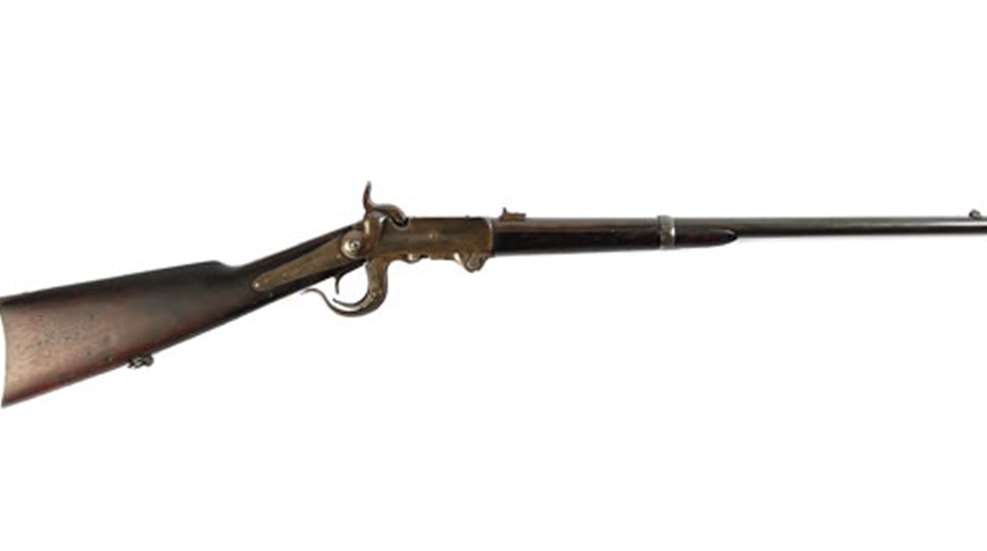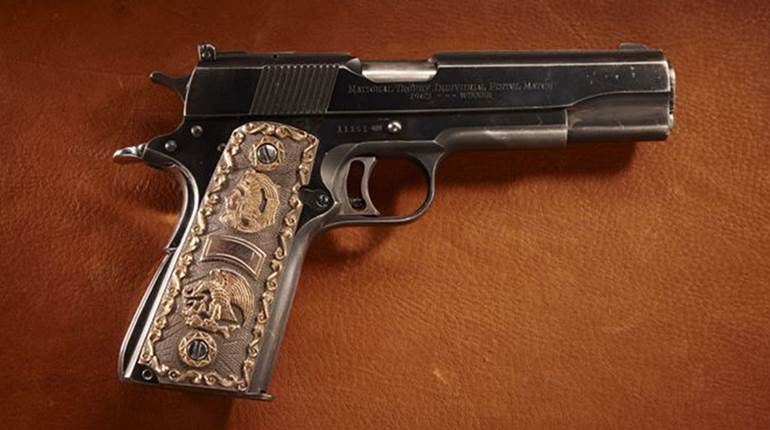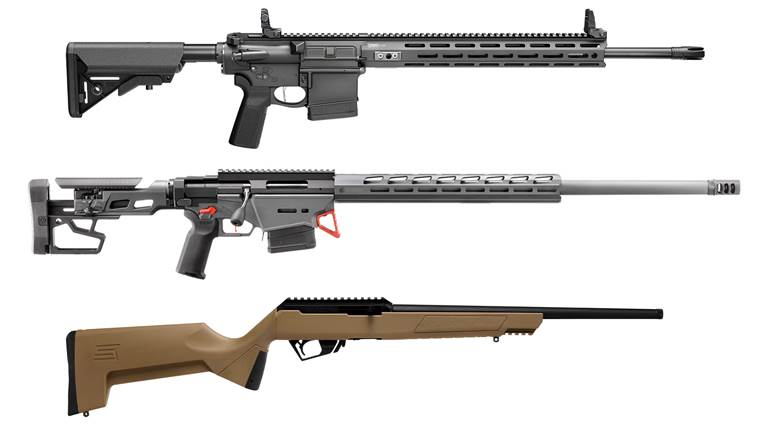
The Burnside, one of the best carbines of the Civil War, was designed by one of its worst generals. Actually, Maj. Gen. Ambrose Everett Burnside had sold the interest in his breechloader well before the war started, so he was unencumbered with the need to further its development or, sadly, to reap the proceeds that would have resulted from its success as the conflict’s third most widely produced Federal carbine, after the Sharps and Spencer.
Burnside’s invention employed a rotating block, released by a loading lever that was activated by a hinged, clamping catch. It chambered a unique .54-cal. cone-shaped brass cartridge with a thick, rounded belt (there were also some earlier, coiled cases, sans belt) at its mouth and a small hole in the base that allowed ignition from a separate percussion cap. The round was loaded, base down, into the chamber. Next, the lever was closed and the block locked in place with the belt halfway between the chamber and barrel, providing an excellent seal.
After the carbine was fired, the lever was again lowered and the spent case easily removed from the block with one’s fingers. If extraction became difficult, it was possible to pull it out with the base of the next cartridge. After the soldier got the hang of it, a Burnside could easily be fired in excess of a dozen rounds a minute.
The Burnside Carbine (there were rifles, too) went through a considerable evolutionary process and provides a fertile area for the collector. About 300 First Models were produced by the Bristol Firearm Co. in Bristol, R.I., a manufactory founded by Burnside himself. It was a .54 caliber with an overall length of 40 inches. First Models had no fore-stock and incorporated a unique side lever, which operated a tape primer and also locked the breechblock in the open position. The carbine’s frame was case-hardened, and the barrel was blued.
Second Models did away with the side lever and tape primer, though they still had no fore-stock. Premier Second Models were made by the Bristol Firearm Co., though later ones were produced by the reorganized Burnside Rifle Co., in Providence, R.I. The Third Model, fitted with a fore-stock, was introduced in 1861 at the request of the U.S. Ordnance Dept.
A Fourth, and final, variant appeared toward the end of the Civil War. It had a double pivoting breechblock to make the gun easier to open and close. Later on, a second type of Fourth Model (sometimes called “Fifth Model”) appeared with a screw in the right side of the action to prevent the block from dropping out of the action, thus speeding up loading. These guns will be seen with both blued and case-hardened frames. Markings on most Fourth Models are, “BURNSIDE’S PATENT/MODEL OF 1864,” though there are some examples with the earlier 1856 date.
The Fourth (or “Fifth,” if you will) Model seen here does have the 1856 stamping, and this marking, though interesting, does not really add that much to the value of the piece. Condition is NRA Fine, the bore is good with minor pitting, and the gun exhibits traces of case-hardening on the frame and much color on the barrel and other parts. The stock is in very clean condition, with a sharp “GC” cartouche at the wrist, the mark of assistant sub-inspector George Curtis. Because they were made in large quantities and appeared toward the end of the Civil War, Fourth Model Burnside Carbines are the least valuable of their ilk. In fact, it is not unusual to find them in virtually unfired condition. The carbine shown is valued at between $2,700 and $3,000. Not too steep a price for one of the most important cavalry arms of one of America’s most important conflicts.
Gun: Fourth/Fifth Model Burnside Carbine
Caliber: .54
Serial Number: 34300
Condition: NRA Fine (Antique Conditions Standards)
Manufactured: 1864
Value: $2,700 to $3,000



































